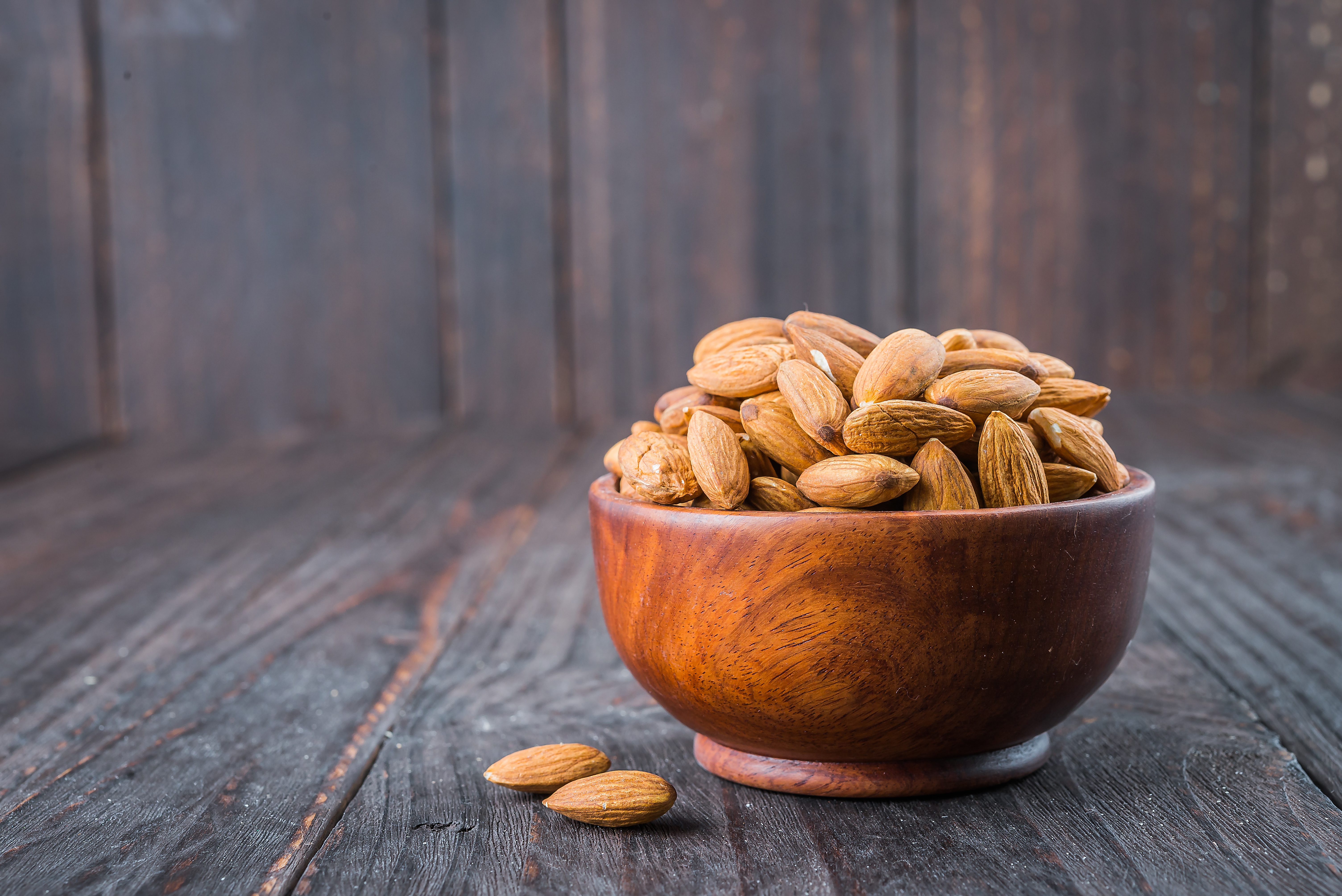The almond is very versatile. Believe it or not, it’s actually classified as a hard-shelled fruit… part of the peach family. Readily available throughout the year, almonds are native to the Middle East. They are commercially available in many forms and offer many health benefits. Keep reading to learn more about the amazing almond.
Sweet versus Bitter
There are two types of almonds, sweet and bitter. The sweet variety accounts for 100 percent of the almonds grown for consumption in the United States. This nut is typically slimmer and longer than its bitter counterpart.
Bitter almonds contain cyanide and are extremely poisonous when eaten raw. However, once they are processed, they are safe to consume. It is for this reason that you should never eat almonds straight from the tree. There is no fool-proof way of distinguishing between the two.
Health Benefits of Almonds
When it comes to health benefits, almonds pack a punch. Because they are high in protein and low in carbohydrates, eating them actually reduces hunger. Almonds contain magnesium, which is helpful in lowering blood pressure and boosting energy. They are gluten-free.
Studies indicate that eating these nuts is also beneficial when it comes to lowering cholesterol levels. One such study revealed that snacking on almonds for 30 days lowered the cholesterol level in some participants by as much as 14 percent.
Almonds – The Nutritional Facts
A one-ounce serving of almonds contains the following:
* 160 calories
* 6 grams protein
* 3.5 grams fiber
* 9 grams (roughly) of heart-healthy fats
* More calcium than any other nut on the planet
Calorie-wise, at least, this puts almonds in the same category as pistachios and cashews… two other healthy nuts worth enjoying.
Common Uses of Almonds
These nuts are ideal to use in countless dessert recipes… everything from cookies to cakes to pastries to ice cream and more! Almonds add a yummy and nutritious crunch to salads. Grind them to use as a coating for chicken and fish or as a smoothie ingredient.
Although you might not think about incorporating almonds into your favorite pasta recipe, it’s definitely something worth considering. Why not try something along the lines of pasta with almond-tomato sauce and roasted broccoli or a spicy pasta with almonds and kale? The possibilities are endless.
Many almond lovers will be the first to tell you that there isn’t a single recipe that can’t be improved upon when you throw in a handful of this delicious nut.
Almond By-Products
Both almond hulls and hash (tiny bits and pieces of the nut, discarded during the shelling process) are used to make animal feed. The shells of the nut are commonly ground up and used for landscaping purposes.
Other almond by-products used in the kitchen include flour, extract, milk, nut butter and marzipan.
The next time you’re in the mood for a delicious snack, why not grab a handful of almonds? It’s the nutritious hard-shelled fruit that does a great job of pretending to be a nut. You and your taste buds won’t regret it!
Pictures by: Designed by Freepik





No Comments Found